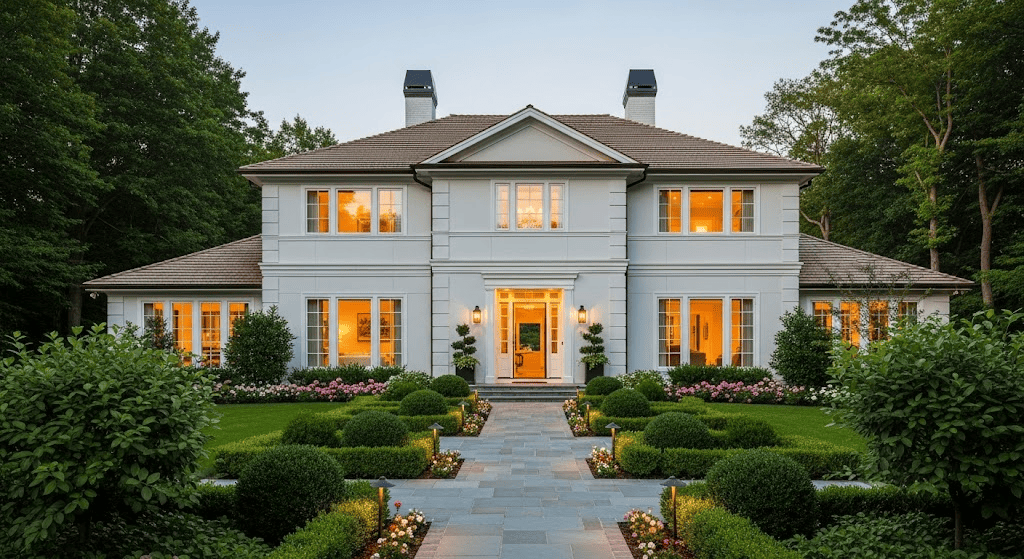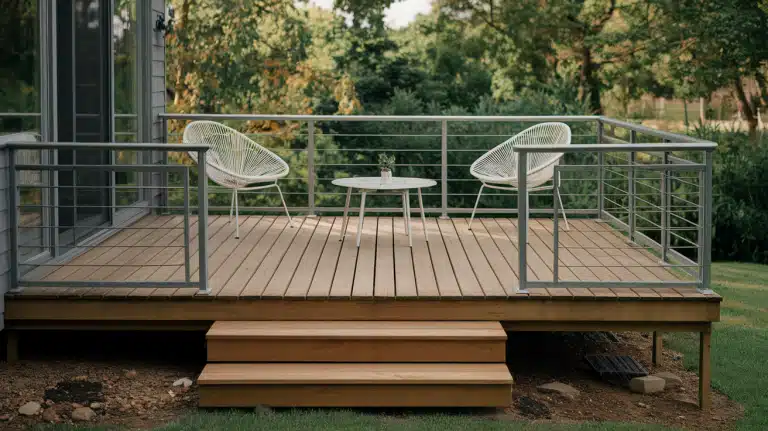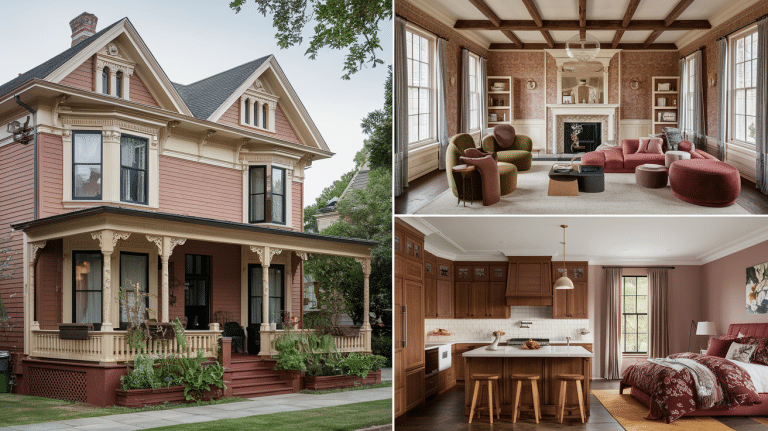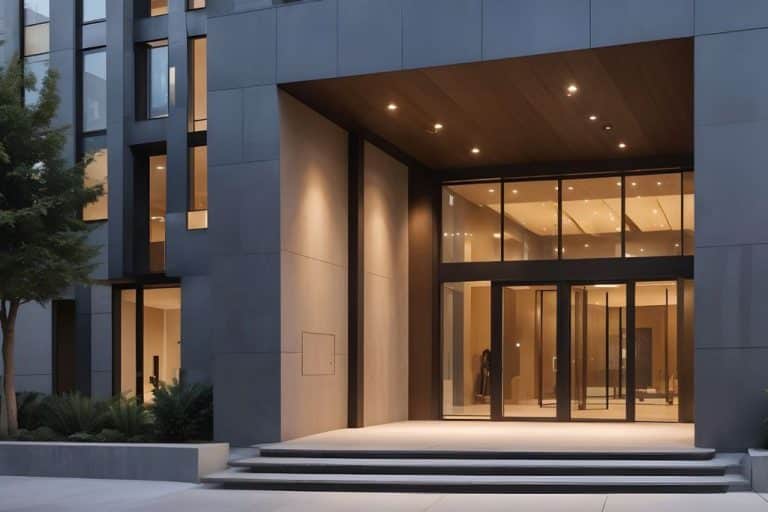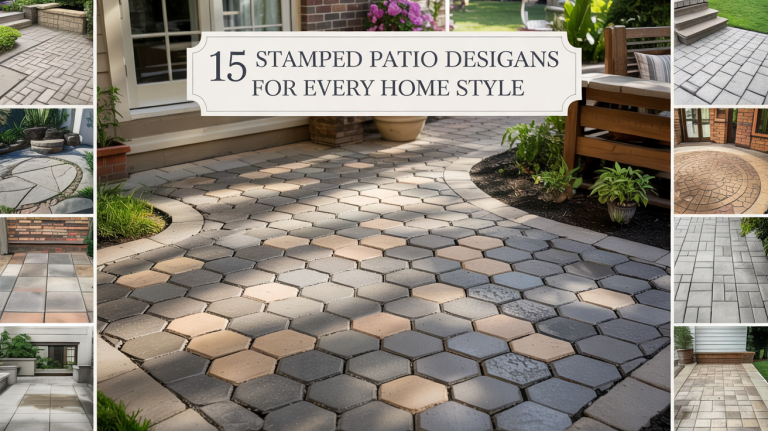Why a Dutch Colonial House Still Wins Hearts Today
I’ve always been drawn to homes with interesting history, and Dutch Colonial houses do exactly that. These charming homes feature distinctive curved rooflines and welcoming front doors, which have been capturing hearts for over three centuries.
A style that started as appropriate housing for Dutch immigrants became one of America’s most lovably iconic styles.
When I walk through neighbourhoods lined with these timeless beauties, I can’t help but notice how they stand out.
There’s something special about their gambrel roofs and symmetric design that makes them feel both historic and perfectly suited for modern living.
In this guide, I’ll cover everything you need to know about Dutch Colonial architecture, from identifying key features to understanding regional variations, plus practical advice for buyers and renovation enthusiasts.
What is a Dutch Colonial House?
Dutch Colonial houses are a distinctive American architectural style that originated in the 1600s when Dutch settlers established colonies in areas that are now New York and New Jersey.
The settlers built homes that differed from other settlers’ and colonists’ homes, as they brought their own style from the Netherlands.
Initially, these homes were quite simple. They were made of wood and stone, and had very few rooms. Over time, the style and design improved and became more unique and decorative.
By the 1700s, the design of Dutch Colonial homes became a recognised standard. They were with a stylised roof and sloping sides with a flat top. This roof style allowed for more room.
Dutch Colonial House: Historical Development
Dutch Colonial architecture evolved significantly from its humble beginnings:
- 1600s-1650s: Early settlers built simple one-room cottages with steep roofs and thick walls for protection against harsh winters.
- 1650s-1700s: Homes grew larger with the addition of second stories and the development of the characteristic gambrel roof design.
- 1700s-1750s: The style reached maturity with refined proportions, decorative elements, and standardised features that we recognise today.
- 1920s-1940s: A revival period brought Dutch Colonial elements into suburban development, creating the “Dutch Colonial Revival” substyle.
Characteristics of Dutch Colonial Architecture
When I look at a Dutch Colonial house, six distinct elements immediately stand out. Each point tells a story of how practical thinking created lasting beauty.
Let me walk you through what makes these homes so recognisable and why each feature matters:
1. Gambrel Roof
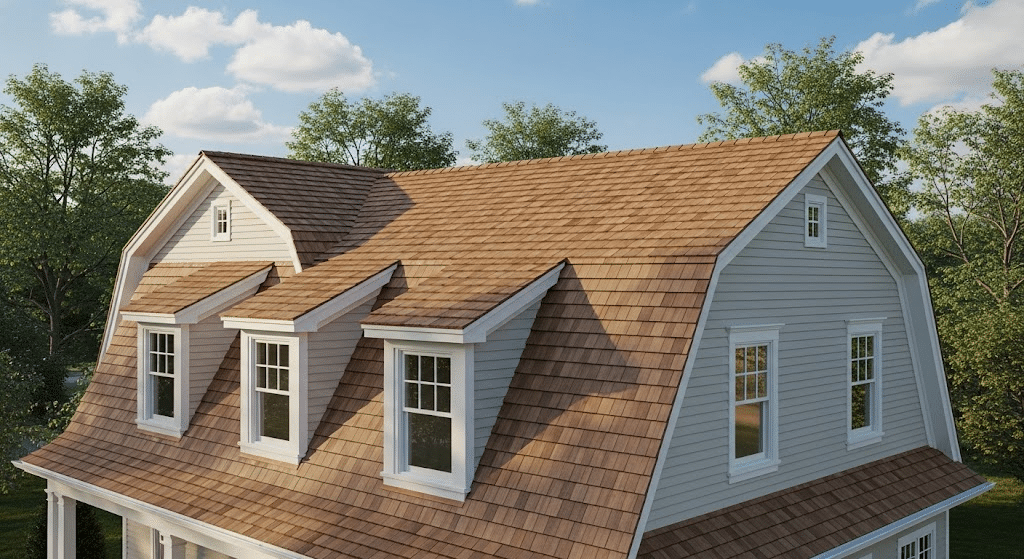
The most recognisable characteristic is the gambrel roof – that barn-style roof with two slopes on each side and a relatively flat top. This roof design gives you more space upstairs without increasing your house’s overall height.
Early Dutch settlers loved this roof style, and it became the signature feature that defines this architectural approach. It’s amazing how such a simple design solution created both beauty and practicality.
2. Front Facade and Dormers
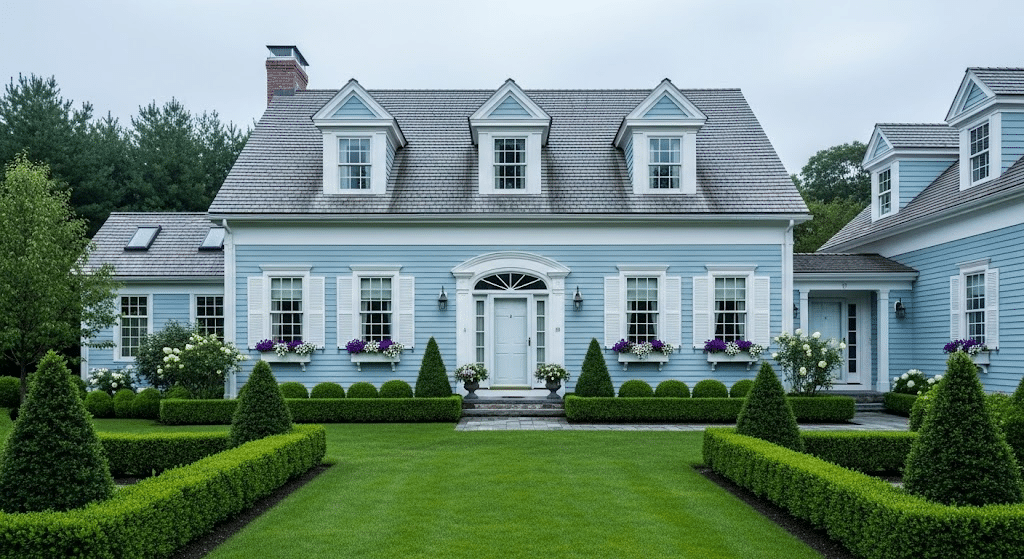
Those charming dormers you see extending above the roof slope aren’t just decorative but also hardworking features. They bring natural light into upper bedrooms or attic spaces while maintaining the home’s balanced appearance.
The balanced arrangement of windows and doors creates that clean, symmetrical look that makes these homes so appealing. It’s this attention to both function and form that keeps Dutch Colonial style relevant today.
3. Symmetry
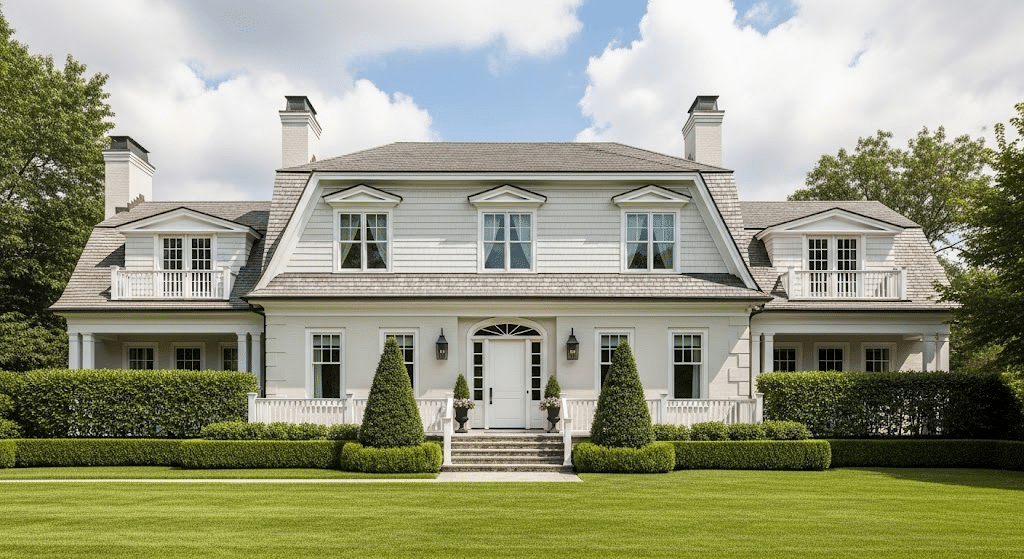
Dutch Colonial houses have an overall feeling of evenness and regularity that immediately catches your eye. There’s something deeply satisfying about their balanced proportions and mirrored elements.
This symmetry creates a sturdy and welcoming feel where nothing looks out of place. It’s this visual balance that makes these homes feel so right and comfortable.
4. Construction
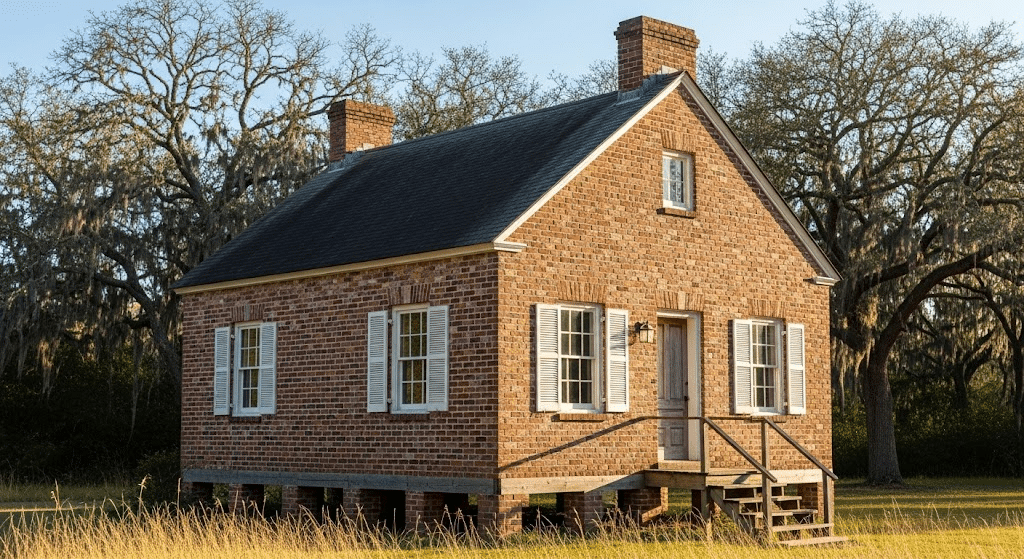
The building approach for Dutch Colonial homes started simple and practical. Early versions were often one-story cottages made from local materials like brick or stone.
As time passed and families grew, people built bigger two-story versions of these reliable homes. The construction methods proved so solid that many original Dutch Colonial houses still stand strong today.
5. Central Chimneys
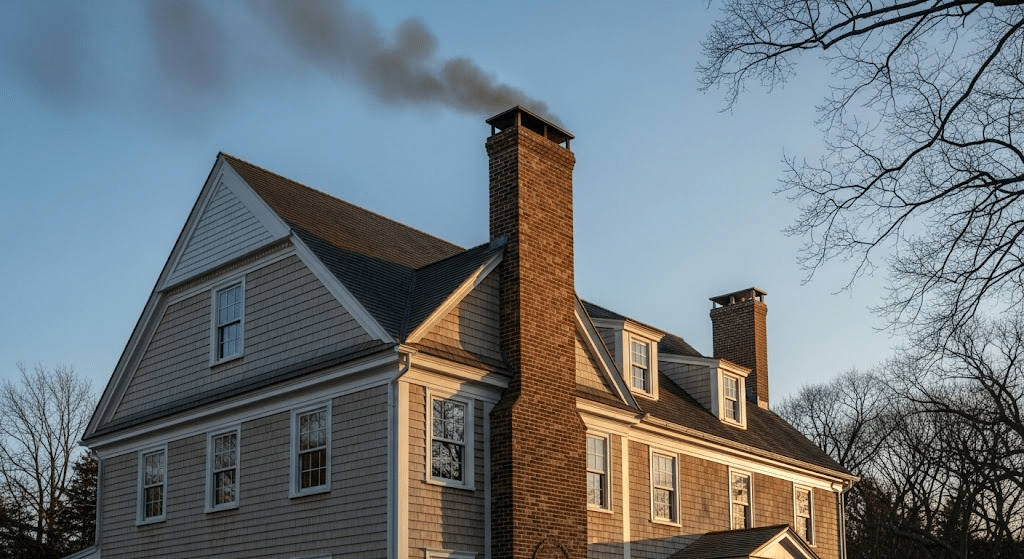
Most original Dutch Colonials featured chimneys positioned strategically in the centre or at each end of the house. This wasn’t just about appearance; it was smart engineering for maximum heating efficiency.
The central placement created a strong structural anchor while efficiently distributing heat throughout the home. It’s another example of how Dutch Colonial design prioritised practical solutions that just happened to look great.
6. Dutch Doors and Materials
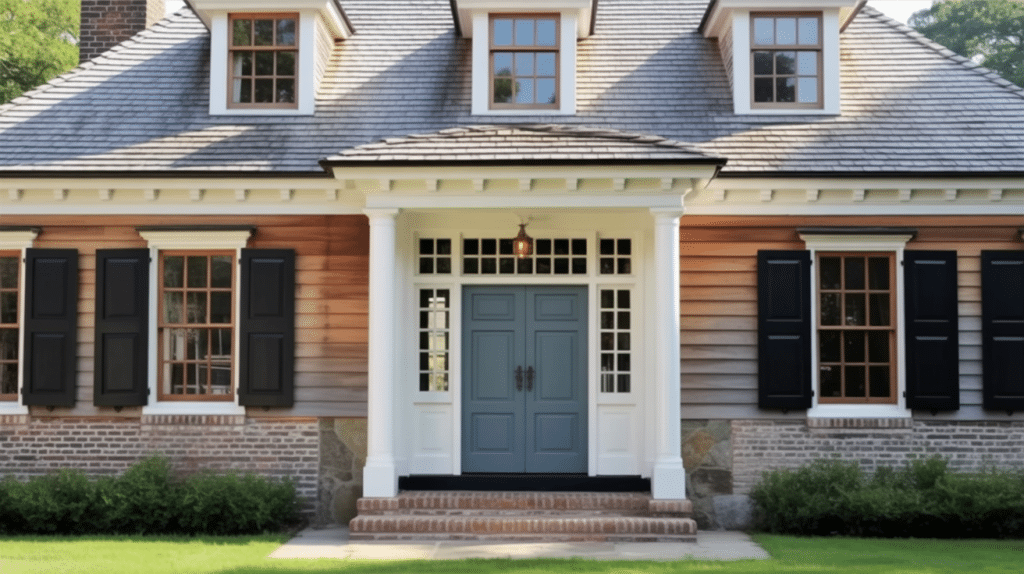
The classic Dutch door perfectly represents this style’s practical charm with its horizontal split design. Traditional materials complement this straightforward approach to home building.
Traditional materials include:
- Fieldstone or brick for foundations and chimneys
- Wood siding (often cedar or pine) for exterior walls
- Multi-pane windows with wooden frames and divided lights
- Cedar shingles for roofing, often weathered to silver-gray
These thoughtful material choices and design elements make Dutch Colonial homes feel honest and modest. It’s this combination of practicality and charm that continues to attract homeowners centuries later.
Why Dutch Colonial Houses are Still Popular Today?
1. An actual, properly sized upper story, with a gambrel roof, gives you all the usable square footage of a two-story house, without needing to put any upward pressure.
2. Modern homes sometimes sacrifice usable upper-story head height for dramatic ceiling height. In the Dutch Colonial house, you get top half-head space without the massing and overbearing to the surrounding sites.
3. Dutch Colonial houses can adapt nicely to today’s functional living, while being easy to update or renovate without losing character.
4. As opposed to ultra-modern homes, which more easily become complex. These homes have a degree of functional flexibility to update or renovate while still retaining historic character, making the functionality of old world possibilities a modern convenience.
5. These homes will also work well in many climates and regional settings. This explains why you will find these homes from New England to the Midwest.
6. There is something of interest about living in a certain style that connects you to American history, which carries the stories and craftsmanship traditions over 300 years that you simply cannot get from contemporary homes.
Dutch Colonial vs. Modern Houses
Refer to this quick comparison between traditional Dutch Colonial houses and Modern houses:
| Feature | Dutch Colonial | Modern Houses |
|---|---|---|
| Roof Design | Gambrel roof maximises upper space | Flat or simple gabled roofs, often with wasted attic space |
| Layout | Defined rooms with flexibility for updates | Open concept with limited renovation options |
| Materials | Solid wood, brick, stone – built to last | Mixed materials, focus on efficiency over longevity |
| Maintenance | Periodic updates to proven systems | Complex systems require specialised maintenance |
| Energy Efficiency | Upgradeable with modern systems while retaining character | Built-in efficiency, but harder to modify |
| Cost Over Time | Lower long-term costs due to durability | Higher replacement costs for specialised components |
Final Thoughts
After walking through the rich history and classical features of Dutch Colonial architecture, it’s clear why these homes continue to capture homeowners’ attention across America.
From their practical gambrel roofs to their adaptable layouts, Dutch Colonial houses offer something that’s increasingly rare in today’s housing market – a perfect balance between character and functionality.
I believe these homes represent more than just architectural style. They’re a smart investment in both your family’s comfort and your property’s future value.
You might be drawn to their historic charm, impressed by their sustainability potential, or simply love how they look from the curb. Dutch Colonial houses prove that good design truly stands the test of time.
If you’re considering your next home purchase, don’t overlook these American classics – they might just be exactly what you’re looking for.

